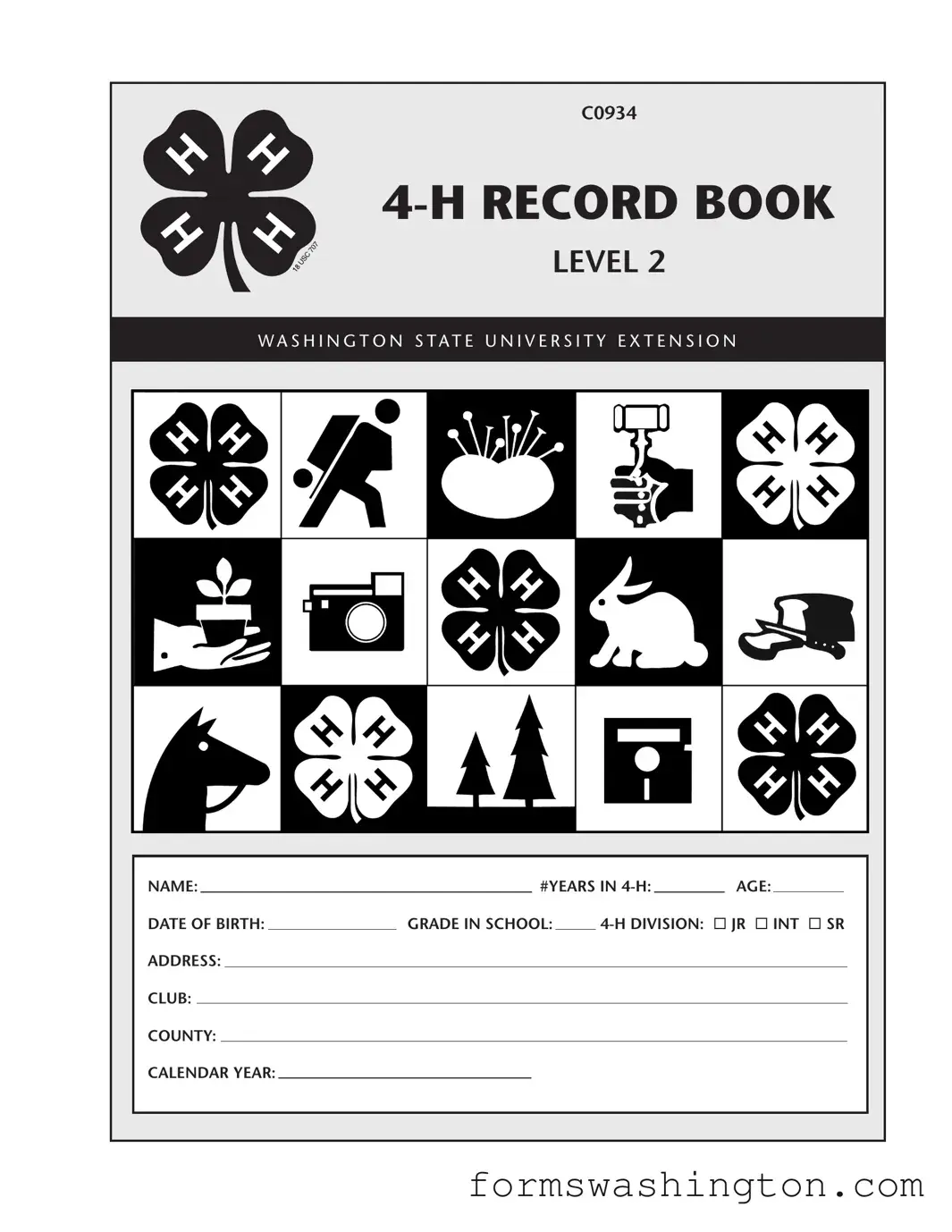The Washington 4-H Record Book form is an essential tool for young 4-H members to document their experiences, learning, and achievements throughout the year. This form is designed to help members keep track of various aspects of their 4-H journey, including their personal information, club activities, and project commitments. Each member starts by filling out basic details such as their name, age, and the number of years in 4-H. The record book encourages organization by suggesting that members use tabs to separate different sections and projects, ensuring that all relevant information is easily accessible. Members will also find sections for a planning calendar, project journals, highlights, and financial summaries, which guide them in reflecting on their progress and planning for the future. Additionally, the narrative section allows members to share their personal stories, showcasing their growth and experiences within the club and community. Overall, the Washington 4-H Record Book serves as a comprehensive record of a member's journey, fostering a sense of accomplishment and encouraging continuous learning.
